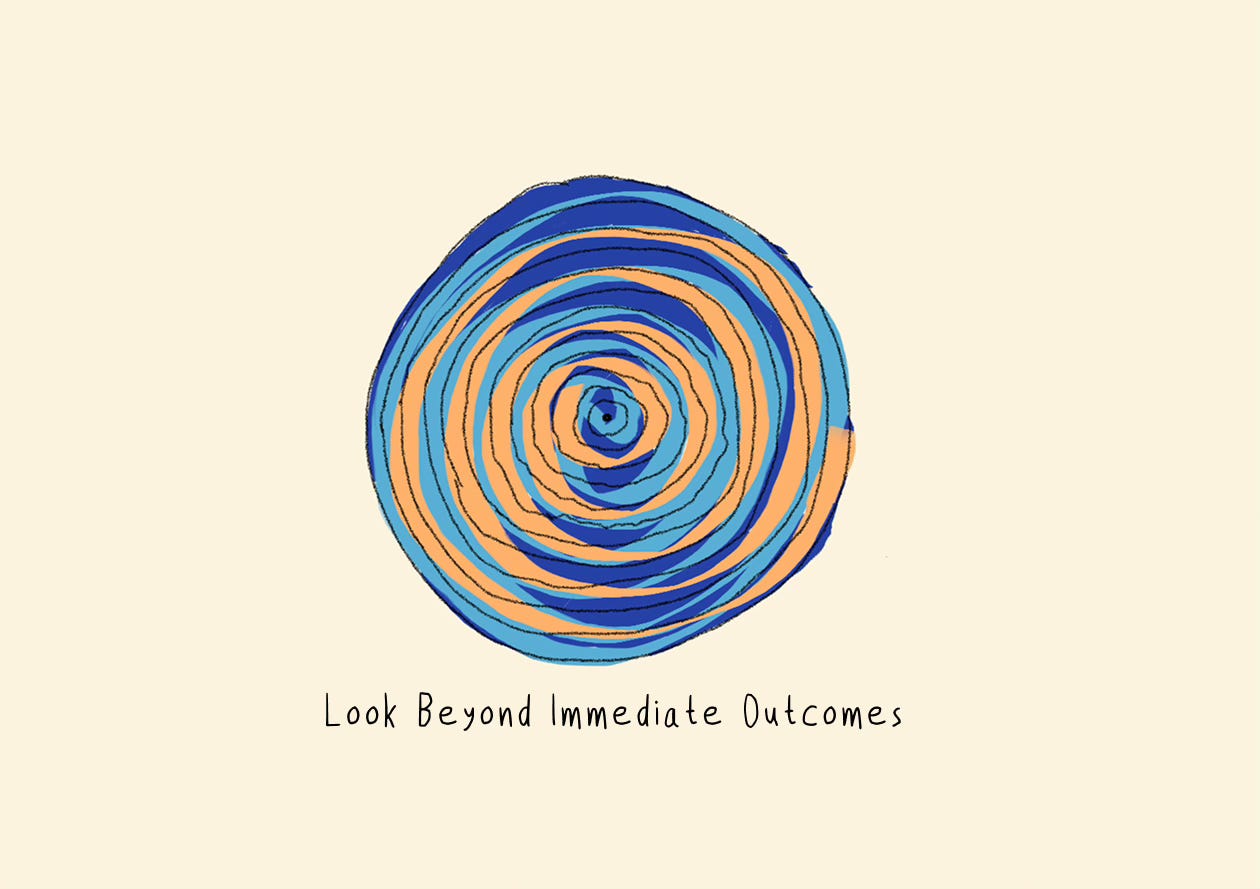When Product Decisions Ripple
The Power of Second-Order Thinking
When Product Decisions Ripple: The Superpower of Second-Order Thinking
Most product decisions seem simple at first glance: Add a feature, boost engagement, solve a problem. But beneath these seemingly straightforward choices lies a web of consequences—some obvious, others hidden. These ripple effects can make or break your product’s success.
Great product managers don’t just react to immediate outcomes, they anticipate the ripple effects. This is where second-order thinking comes in. Let’s explore how asking "And then what?" can transform your decision-making and elevate your strategy.
The Hidden Complexity of Simple Choices
Imagine this: Your team launches a powerful new feature. Users love it, engagement soars. Success, right? Not quite. Two months later, onboarding completion rates drop 15%, and customer support tickets spike. What happened?
Welcome to the world of second-order effects, the consequences that unfold after the initial impact. Second-order thinking is the art of mapping these ripples by repeatedly asking, “And then what?” It’s like playing chess instead of checkers—while others focus on the next move, you’re thinking several steps ahead.
The Ripple Effect Framework
Every decision creates ripples that extend far beyond the immediate impact. Here’s how they unfold:
First Wave: Direct Impact
Feature adoption
Initial metrics shift
Immediate user feedback
Second Wave: System Effects
Team workload redistribution
Technical debt accumulation
Documentation complexity
Support team capacity
Third Wave: Cultural Impact
Cross-team collaboration patterns
Decision-making precedents
Organizational learning curves
Each wave builds on the last, creating a cascade of changes that can either strengthen or weaken your product and team.
Real-World Examples: How Decisions Ripple Through Your Product
Let's look at three common scenarios in product management to illustrate how second-order thinking helps uncover hidden consequences:
Scenario 1: Adding a Premium Feature
First-order effect: Revenue increases as users upgrade.
Second-order impact: Support team faces increased workload due to complexity.
Third-order consequence: Rising stress levels lead to team burnout and reduced morale.
Scenario 2: Simplifying Your UI
First-order effect: New users complete onboarding faster, initial engagement improves.
Second-order impact: Power users become frustrated by lost advanced features.
Third-order consequence: Increased feature requests and dissatisfaction among loyal users.
Scenario 3: Quick Technical Fixes
First-order effect: Immediate problem solved; users satisfied in short-term.
Second-order impact: Technical debt accumulates beneath the surface.
Third-order consequence: Long-term development slows down, hindering future innovation.
By mapping out these ripple effects clearly, you can anticipate challenges before they arise, transforming reactive firefighting into proactive strategic thinking.
Pro Tip: Next time you're making a product decision, pause and ask yourself:
Who else will this decision affect?
What behaviors might this incentivize?
How could this shape our product culture in the long run?
Practicing this regularly builds your second-order thinking muscle, helping you navigate complexity with clarity and confidence.
How to Build Your Second-Order Thinking Muscle
Second-order thinking isn’t about predicting every outcome—it’s about developing a more nuanced understanding of how decisions propagate through complex systems. Here’s how to start:
Ask the Right Questions:
Use this 3-question framework for every decision:
Beyond Users: "Who else will this decision affect?"
Beyond Metrics: "What behaviors might this incentivize?"
Beyond Quarter: "How will this shape our product culture?"
Map the Ripples:
Create a ripple diagram to visualize first-, second-, and third-order effects. Tools like Miro or Figma can help your team collaborate on these visualizations.
Conduct Pre-Mortems:
Before launching a feature, ask: "If this fails, what will have caused it?" Use these insights to proactively address potential ripple effects.
Document Outcomes:
Keep a "Consequences Journal" to track predictions against actual outcomes. Over time, this builds pattern recognition and sharpens your strategic instincts.
From Theory to Practice: Try This in Your Next Meeting
Here’s an exercise to bring second-order thinking into your workflow:
Present an immediate solution (e.g., adding a new feature).
Have each team member write down three potential second-order effects.
Compare notes and look for patterns or blind spots.
Use these insights to refine the decision before moving forward.
This simple practice not only improves decision quality but also fosters collaboration and shared ownership among your team.
Why Second-Order Thinking Is a Superpower for Product Leaders
In today’s fast-paced tech environment, it’s easy to focus on short-term wins, boosting engagement, hitting KPIs, shipping features faster. But exceptional product leaders think beyond the first wave of impact. They understand that sustainable success comes from anticipating ripple effects and making decisions that strengthen their product, team, and culture over time.
Second-order thinking isn’t just a tool, it’s a mindset shift that helps you navigate complexity with clarity and confidence.
Thanks for reading! If you found this valuable, subscribe to ListenIn Labs for weekly insights that help you think deeper, lead smarter, and thrive in tech.



